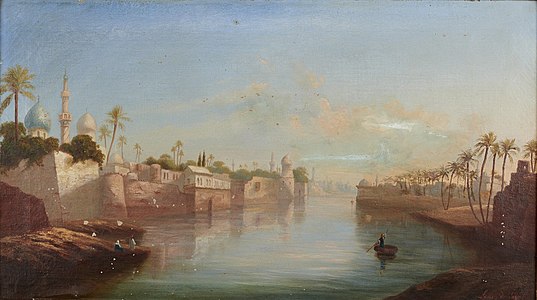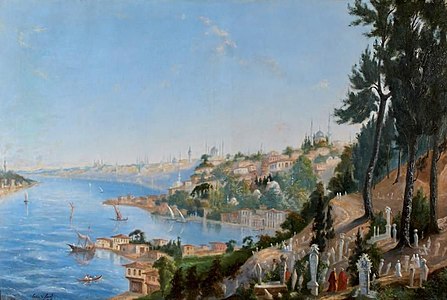
The Bibliothèque nationale de France is the national library of France, located in Paris on two main sites known respectively as Richelieu and François-Mitterrand. It is the national repository of all that is published in France. Some of its extensive collections, including books and manuscripts but also precious objects and artworks, are on display at the BnF Museum on the Richelieu site.

Pierre Jean Marie Laval was a French politician. During the Third Republic, he served as Prime Minister of France from 27 January 1931 to 20 February 1932 and 7 June 1935 to 24 January 1936. He again occupied the post during the German occupation, from 18 April 1942 to 20 August 1944.
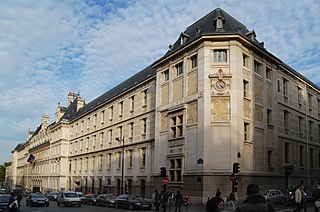
The Lycée Louis-le-Grand, also referred to simply as Louis-le-Grand or by its acronym LLG, is a public Lycée located on rue Saint-Jacques in central Paris. It was founded in the early 1560s by the Jesuits as the Collège de Clermont, was renamed in 1682 after King Louis XIV, and has remained at the apex of France's secondary education system despite its disruption in 1762 following the suppression of the Society of Jesus. It offers both a high school curriculum, and a Classes Préparatoires post-secondary-level curriculum in the sciences, business and humanities.
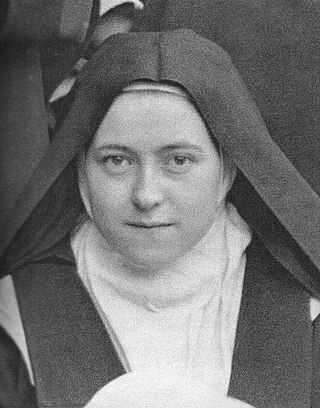
Thérèse of Lisieux, born Marie Françoise-Thérèse Martin, also known as Saint Therese of the Child Jesus and the Holy Face, was a French Catholic Discalced Carmelite nun who is widely venerated in modern times. She is popularly known in English as the Little Flower of Jesus, or simply the Little Flower, and in French as la petite Thérèse.
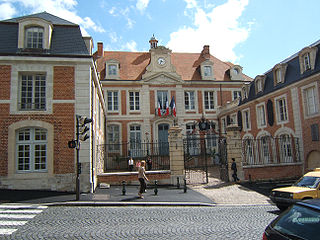
Lisieux is a commune in the Calvados department in the Normandy region in northwestern France. It is the capital of the Pays d'Auge area, which is characterised by valleys and hedged farmland.
Didot is the name of a family of French printers, punch-cutters and publishers. Through its achievements and advancements in printing, publishing and typography, the family has lent its name to typographic measurements developed by François-Ambroise Didot and the Didot typeface developed by Firmin Didot. The Didot company of France was ultimately incorporated into the modern CPI printing group.
Joachim Menant was a French magistrate and orientalist.
André Hunebelle was a French maître verrier and film director.
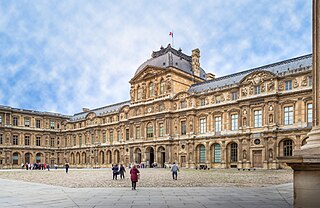
The Louvre Palace, often referred to simply as the Louvre, is an iconic French palace located on the Right Bank of the Seine in Paris, occupying a vast expanse of land between the Tuileries Gardens and the church of Saint-Germain l'Auxerrois. Originally a military facility, it has served numerous government-related functions in the past, including intermittently as a royal residence between the 14th and 18th centuries. It is now mostly used by the Louvre Museum, which first opened there in 1793.
Masson was a French publisher which specialized principally in medical and scientific books and journals. It also published textbooks for secondary and tertiary education.
Charles-Victor Langlois was a French historian, archivist and paleographer, who specialized in the study of the Middle Ages and was a lecturer at the Sorbonne, where he taught paleography, bibliography, and the history of the Middle Ages.

Abraham Moles was a pioneer in information science and communication studies in France, He was a professor at Ulm school of design and University of Strasbourg. He is known for his work on kitsch.

Anne-Adrien-Pierre de Montmorency, 1st Duke of San Fernando Luis, 3rd Duke of Laval-Montmorency, GE, was a peer of France and of Spain.

Michel-Antoine David also David l'aîné was an 18th-century French printer, publisher and Encyclopédiste during the Age of Enlightenment. He was one of the four printers of the Encyclopédie.
Gilbert Ouy was a French historian, palaeographer and librarian.
Julien Belin was a French composer and lutenist active in the second half of the 16th century; he died after 1584.
Paul Damance [D’Amance] was a French religious of the ordre de la sainte Trinité et rédemption des captifs, who had several masses in "musical plainsong" published between 1687 and 1707.

Anne de Graville or Anne Malet de Graville (c.1490–c.1540) was a French Renaissance poet, translator, book collector, and lady-in-waiting to Queen Claude of France. She hailed from one of the most prominent families in the country, and overcame scandal to become a well respected literary figure at the royal court. In addition to authoring two texts, she was an avid collector of books and manuscripts.

The expansion of the Louvre under Napoleon III in the 1850s, known at the time and until the 1980s as the Nouveau Louvre or Louvre de Napoléon III, was an iconic project of the Second French Empire and a centerpiece of its ambitious transformation of Paris. Its design was initially produced by Louis Visconti and, after Visconti's death in late 1853, modified and executed by Hector Lefuel. It represented the completion of a centuries-long project, sometimes referred to as the grand dessein, to connect the old Louvre Palace around the Cour Carrée with the Tuileries Palace to the west. Following the Tuileries' arson at the end of the Paris Commune in 1871 and demolition a decade later, Napoleon III's nouveau Louvre became the eastern end of Paris's axe historique centered on the Champs-Élysées.
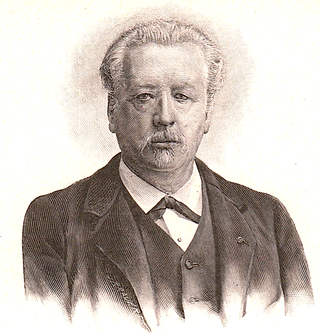
Frédéric-Auguste Laguillermie was a French etcher and painter. He was one of the founders of the Société des aquafortistes français.



